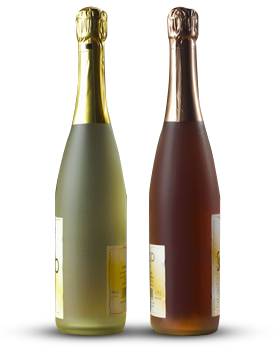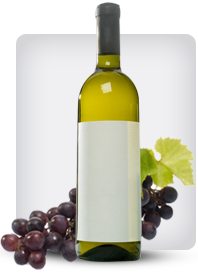

Tag: Climate
Climate Impact on Malbec Grape Quality
Posted onMalbec, a red grape variety originally from France but now most famously cultivated in Argentina, is highly sensitive to climatic conditions. The quality of Malbec grapes—and consequently the wine they produce—depends significantly on temperature, rainfall, sunlight, and altitude. As climate change alters growing conditions worldwide, understanding its effects on Malbec is crucial for viticulturists and winemakers.
Temperature and Ripening
Malbec thrives in warm, dry climates with a long growing season. Optimal temperatures during the ripening phase (between 15°C and 25°C) ensure balanced sugar accumulation, acidity, and phenolic development. However, excessive heat can accelerate ripening, leading to overly high sugar levels and low acidity, resulting in flabby, unbalanced wines. Conversely, cooler temperatures may delay ripening, producing grapes with harsh tannins and insufficient sugar.
Rainfall and Water Stress
Malbec vines require moderate water availability, particularly during budburst and veraison. Excessive rainfall increases disease pressure (such as mildew and rot), while drought conditions can stunt berry growth and concentrate flavors too intensely. In Argentina’s Mendoza region, controlled irrigation from the Andes mitigates water stress, but shifting precipitation patterns due to climate change may challenge this balance.
Sunlight and UV Exposure
High-altitude vineyards, such as those in the Uco Valley (900–1,500 meters above sea level), benefit from intense sunlight and UV radiation. This exposure enhances anthocyanin and tannin production, contributing to Malbec’s deep color and robust structure. However, rising temperatures may force growers to seek even higher elevations to maintain optimal conditions.
Climate Change Adaptation Strategies
To preserve Malbec quality, winemakers are adopting adaptive measures:
- Elevation shifts: Planting vineyards at higher altitudes to counter rising temperatures.
- Canopy management: Adjusting leaf coverage to regulate sun exposure.
- Water efficiency: Implementing drip irrigation and soil moisture monitoring.
- Harvest timing: Picking earlier to retain acidity in warmer years.
Conclusion
Climate variability poses both risks and opportunities for Malbec viticulture. While warmer conditions may benefit some regions, others must innovate to sustain grape quality. By leveraging adaptive strategies, the wine industry can continue producing exceptional Malbec despite environmental challenges.
Climate Impact on Zinfandel Quality
Posted onZinfandel, one of California’s signature grape varieties, is highly sensitive to climatic conditions. The quality of Zinfandel wines—ranging from bold, fruit-forward expressions to more structured, spicy profiles—is deeply influenced by temperature, rainfall, and sunlight exposure. As climate change alters growing conditions worldwide, understanding its impact on Zinfandel is crucial for winemakers and enthusiasts alike.
Temperature: A Delicate Balance
Zinfandel thrives in warm climates but suffers under extreme heat. Optimal ripening occurs between 75°F and 90°F (24°C–32°C). Excessive temperatures can lead to:
- Over-ripening: High sugar accumulation, resulting in excessively alcoholic wines with reduced acidity.
- Sunburn: Direct heat can damage grape skins, affecting tannin structure and color.
- Loss of Aromatics: Volatile compounds that contribute to Zinfandel’s berry and spice notes may degrade.
Conversely, cooler climates produce Zinfandel with higher acidity and fresher fruit flavors, though insufficient warmth may hinder full phenolic ripeness.
Water Stress and Drought Resilience
Zinfandel vines are relatively drought-tolerant, but prolonged water stress can reduce yields and concentrate flavors—sometimes beneficially. However, severe drought leads to:
- Berry Shrivel: Diminished juice content, affecting wine volume.
- Uneven Ripening: Clusters may contain both underripe and overripe grapes.
Conversely, excessive rainfall near harvest dilutes flavors and increases disease pressure (e.g., bunch rot).
Sunlight and Microclimates
Zinfandel benefits from ample sunlight to develop rich color and polyphenols. However, in hotter regions, canopy management (e.g., leaf thinning) is essential to prevent sun damage. Coastal fog, as in parts of Sonoma, moderates temperatures, preserving acidity and enhancing elegance.
Climate Change Adaptations
With rising global temperatures, Zinfandel growers are adopting strategies such as:
- Shifting Plantings: Moving vineyards to cooler elevations or coastal areas.
- Altering Harvest Times: Picking earlier to retain acidity.
- Exploring Clonal Selection: Choosing heat-resistant Zinfandel clones.
These adaptations aim to preserve Zinfandel’s signature balance of fruit intensity, spice, and structure.
Conclusion
Climate plays a pivotal role in shaping Zinfandel’s quality, with each element—temperature, water, and sunlight—contributing to its distinct profile. As viticultural regions face shifting conditions, proactive measures will be essential to sustain Zinfandel’s legacy as a versatile and expressive varietal.
The Climate and Terrain of St
Posted onThe Environment and Terrain of St.
St. Helena has actually ended up being recognized not just for generating great wines yet also for being the company center in Napa Valley. If you are taking a trip to the location and seeking lodgings, this area is certainly worth considering. The picturesque town is house to some 6,000 locals and also includes some of one of the most stunning wine nation in the area. In addition, you will certainly have the opportunity to tour a few of the most prestigious vineyards in the entire state of The golden state.
The cozy climate in St. Helena has actually added to its development as a premier wine area. The majority of the vineyards in St. Helena generate wines that are Cabernet Sauvignon based as well as do so with remarkable success. Several of one of the most popular wineries in St. Helena include Charles Krug, Beringer and also Winery 29.
As an outcome of the cozy and also warm climate in St. Helena, Zinfandel and also Cabernet Sauvignon, specifically, do rather well. The wines produced in St. Helena have the tendency to posses a full body than the wines you will discover in the southerly areas, which are cooler. As a result of effectiveness of the wines of St. Helena, the area has become a preferred with tourists that want samplings and wine excursions.
As holds true with a lot of the sub-regions of the Napa Valley, you will discover that the terrain of St. Helena is rather different compared to even areas that are located rather close by. The dirts in this region tend be consisted of volcanic and also alluvial particles. At once the San Pablo Bay covered a number of the AVAs in Napa Valley; however, remarkably enough, it did never expand thus far north as St. Helena.
In comparison to the southerly areas of Napa Valley, St. Helena has the tendency to be warmer. The valley has the tendency to curve somewhat to the west, dispersing also the percentages of fog and also wind that glide past the Yountville Mounts. In the afternoon; however, the environment has the tendency to come to be cooler as the breeze makes its way via Knights Valley and Chalk Hillside. As evening attracts near, the temperature levels go down also additionally. This offers the chance for the grapes in St. Helena to retain their level of acidity.
St. Helena likewise gets more rainfall typically compared to the remainder of the southern valley. Up to 38 inches of rain falls each year in St. Helena, compared with a mere 32 inches in the remainder of the valley.
The terrain of St. Helena has actually likewise resulted in the advancement of this region as a premier wine production area. Right here, the dirt tends to be mainly sedimentary and also alluvial. A small amount of volcanic impact can additionally be found in the soil. Because of this, a few of the most widely grown ranges in the area include Chenin Blanc and also Chardonnay. Zinfandel likewise often tends to do well here, as evidenced by the success of Buehler Vineyards.
Because of that the creeping plants in the valley have the ability to extend approximately 400 feet, Merlot, Zinfandel as well as Cabernet Sauvignon are all able to flourish in the local location.
You will find as you travel southern of St. Helena that Valley has the tendency to narrow quite a bit. North of community, beside Freeway 29, is the Bench. Beringer Vineyards, among one of the most popular vineyards in the country, is located on the Northern Bench. As the oldest constantly run winery in the Valley, Beringer has actually developed rather a track record.
The phenomenal environment and also surface in St. Helena has brought about the advancement of numerous renowned vineyards and vineyards. Vineyard 29 is simply among the several examples that have actually ended up being recognized throughout the world as an outcome of the outstanding regional climate and surface. The winery was founded in 1989 by Teresa Norton and Tom Paine. Cuttings from Elegance Family Winery were utilized to establish the winery.
While there is no question that St. Helena has actually ended up being well established as a mall in the Valley, the production of phenomenal wines is still fairly strong below. The charming town in the heart of the St. Helena region works as an eye-catching draw for travelers annually.
popular posts
-

Aging Potential of Premium Pinot Noir: Unlocking the Elegance of Time Among the world’s noble grape varieties, Pinot Noir holds a unique and almost mythical status
12-30 2025Celebrated for its ethereal aromatics, silky texture, and captivating expression of *terroir*, it is often considered the most transparent conduit from vineyard to glass. Read More
-

Food Pairing with Full-Bodied Cabernet Sauvignon Few wines command a table with the authority of a full-bodied Cabernet Sauvignon
12-29 2025With its deep, inky color and powerful structure built on robust tannins, dark fruit flavors, and often a hint of oak, it’s a wine Read More

